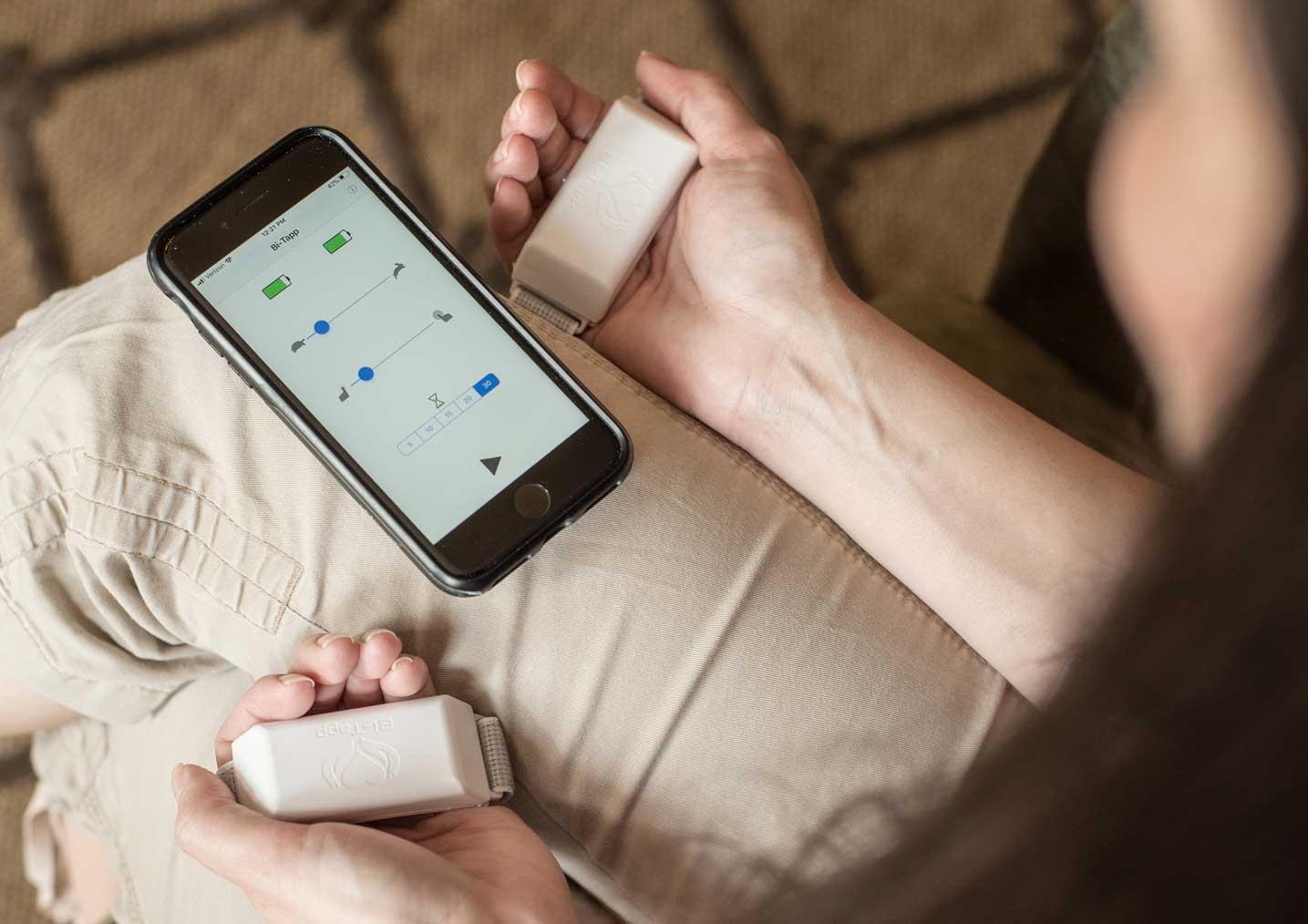EMDR equipment has helped with the advancement of EMDR therapy throughout the world.
Bilateral stimulation is part of EMDR therapy. Initially, therapists provided the hand movements needed for this type of therapy. However, not every client could do the eye movements due to visual impairments or other variables. As a result, bilateral tapping became the second method used by EMDR therapists to provide bilateral stimulation. The therapist would tap back and forth on the top of a client’s hands or the side of the client’s knees.
Over time, this therapy continued to grow and develop. Innovators created EMDR equipment out of necessity. Clinicians would report fatigue and arm pain after doing EMDR therapy several sessions in a row. Meanwhile, not all clients wanted to be touched to receive bilateral tapping.
While many EMDR tools help patients and therapists worldwide, this article focuses on the three U.S. companies that offer tactile (tapping) bilateral stimulation. Two main features set these products apart from other products on the market. First, each of these products allows you to customize the settings of the tapping. Second, each of these products provides the option for bilateral auditory tones.
Theratapper
The Theratapper was the first patented device that provided tactile alternating bilateral stimulation. Jurgen and Shirley Jean Schmidt, the creators of this product were awarded a patent in 1999.
The main features of the Theratapper include:
- Pulsers to hold
- Blinking lights to provide visual feedback about pulse length and rate of speed
- Length Knob: You can adjust the length of each pulse.
- Intensity Knob: You can adjust the intensity of each pulse
- Pause Knob: You can control the length of the pause between the pulses
- Extra 6-foot replaceable wire
Added features of the Theratapper Plus:
- Headphones
- Auditory bilateral stimulation is an option
NeuroTek
Neurotek was the first company to create and receive a patent for a lightbar. This device simulates eye movement previously provided by the therapist’s hand or a wand. Over time, Neurotek created a variety of EMDR tools, including tactile and auditory equipment. They currently sell four kinds of tactile and audio products.
Features all four products have in common:
- Pulsers to hold
- Adjustable rate of speed
- Adjustable rate intensity
- Bilateral visuals are shown on the top of the device
- Bilateral auditory option
Additional features are added on as you buy the more expensive models, including:
- Counter
- Profile Settings
- Options for sound
- Choice of Pulsers
- Option of wireless headphones
- Option of wireless pulsers
Bi-Tapp
Bi-Tapp is a company created in 2017. They were awarded their first patent in 2020. This product was deliberately designed to feel like tapping instead of vibration. Bi-Tapp is a resource that is being used in Teletherapy as well during in-person sessions. The main features of this product include:
- Bluetooth tappers
- Free Bi-Tapp App
- Counter on the App
- Customize the rate of speed and intensity on the App. This includes fine-tuning if needed (For example, the rate of intensity can range from 1% – 100%)
- Teletherapy option for therapist-controlled bilateral tapping. Bi-Tapp and remotEMDR have teamed up to provide this option to therapists around the world.
- Battery life per charge is over 60 hours
Expanded use of bilateral stimulation as a calming resource
Both Theratapper and Bi-Tapp provide the option for use of bilateral tapping outside of a therapy session. When bilateral tapping is used as a stand-alone resource, people of all ages are consistently reporting:
- Increase in a sense of safety and calm
- Increase in focus and attention
- Improved ability to get quality sleep
- Reduction of stress and anxiety
- Reduction of pain
Mark Grant, clinical psychologist and past chairperson of the EMDR Association of Australia has worked with bilateral tones as a stand-alone resource since the 1990s. He has created Apps that provide auditory bilateral stimulation. These Apps are available to the general public to use.
Conclusion
All in all, EMDR equipment has helped with the advancement of EMDR therapy. Many therapists would not be able to provide EMDR therapy without the assistance of the equipment, and many people would not be able to receive this therapy without the availability of EMDR tools. These companies will continue to work hand in hand with EMDR therapists as they facilitate healing throughout the world.

